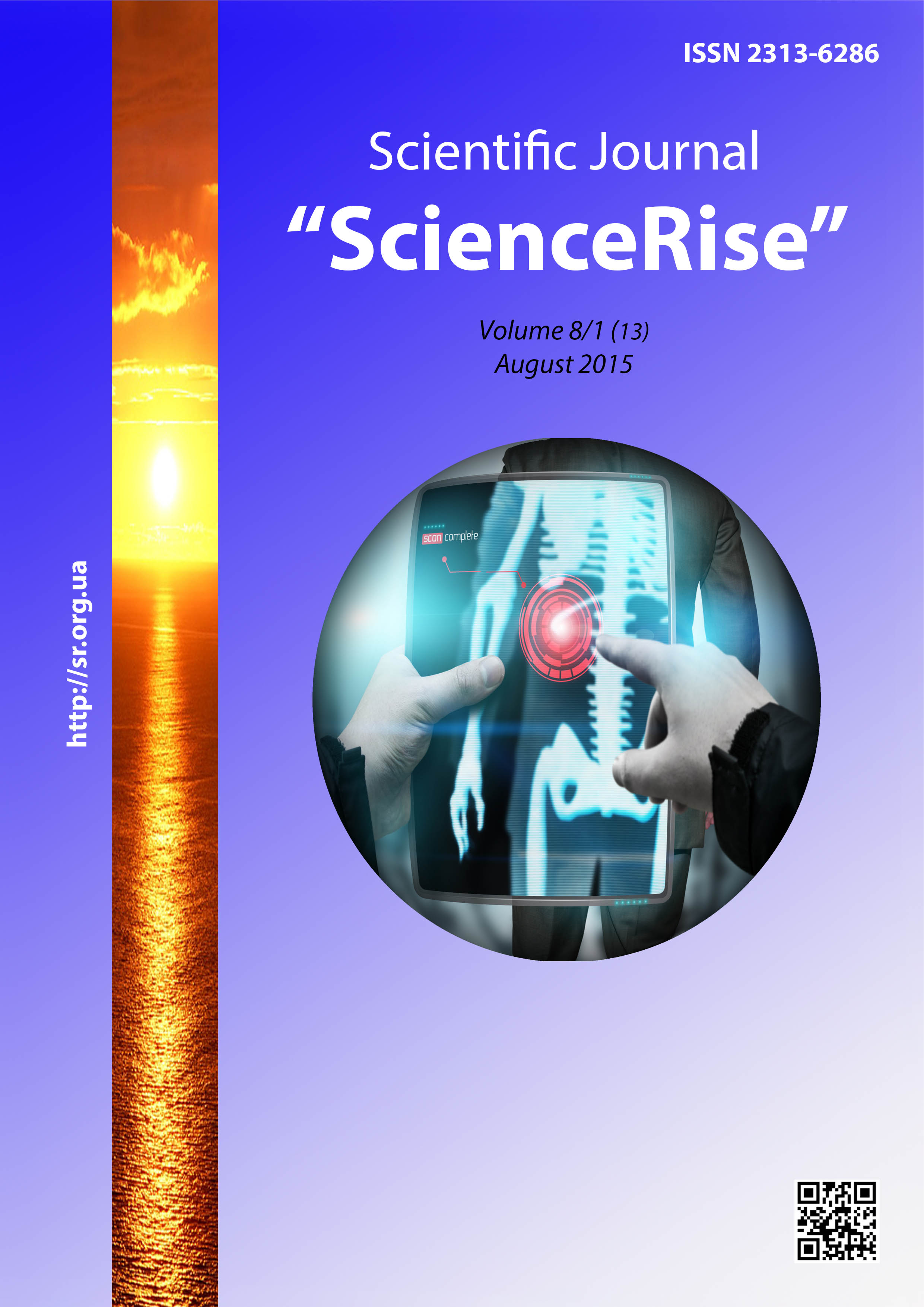Inflames of confined space-hypoxia syndrome on riboflavin and its coenzymes content in white rat tissues
DOI:
https://doi.org/10.15587/2313-8416.2015.48360Keywords:
confined space-hypoxia syndrome, riboflavin, flavin adenine dinucleotide, flavin mononucleotide, metabolism, liver, heart, kidneys, brainAbstract
During confined space-hypoxia syndrome it is observed a significant increase of riboflavin in all organs of rats, but more in the heart and brain. High level of flavin adenine dinucleotide is observed in rat liver and kidney, and significant increase of flavin mononucleotide is observed only in the brain. The data reflect the metabolism of riboflavin under conditions of confined space-hypoxia syndrome, and change of the flavin content in the bodies of animals indicates different compensatory processes
References
Lukyanova, L. D. (2000). Modern problems of hypoxia. Bulletin of the Russian Academy of medical Sciences, 9, 3–12.
Karpov, L. M. (1994). The implementation of the specific activity of functionally related b vitamins, their derivatives and complexes under different conditions of the body. Odessa, 505.
Rozanov, A. Y., Treshhynskyj, A. N., Hmelevskyj, Ju. V. (1985). Enzymatic processes and their correction in extreme conditions. Kyiv: Health, 208.
Gorаnсhuk, V. V., Shustov, E. B., Andreeva, L. Y. et. al. (1999). Biochemical determinants and mechanisms of development of extreme hypoxic hypoxia. Human Physiology, 25 (4), 27–32.
Leskova, G. F. (1989). Violation of the mechanisms of regulation and their correction. Moscow: Medicine, 749.
Morozkina, T. S., Mojseenok, A. G. (2002). Vitamins: a Brief guide for physicians and students of medical, pharmaceutical and biological specialties. Minsk: Asar, 112.
Karkichenko, N. N., Grachov, S. V. (2010). A guide to laboratory animal and alternative models in biomedical technology. Moscow: Profile, 358.
(2010). Official Journal of the European Union L276/33. Directive 2010/63/EU of the European parliament and of the council of 22 September 2010 on the protection of animals used for scientific purposes, 86,609,EC.20, 10.
Ostrovsky, Y. M. (1979). Experimental vitaminology. Moscow: Science and technology, 551.
Rokitski, P. F. (1973). Biological statistics. Minsk: Vycshaja school, 267.
Musil, J. (1985). Fundamentals of biochemistry of pathological processes. Moscow: Medicine, 123.
Bizenkova, M. N., Romantsev, N. G., Chesnokov, N. P. (2006). Metabolic effects of antioxidants in acute hypoxic hypoxia. Fundamental research, 1, 17.
Downloads
Published
Issue
Section
License
Copyright (c) 2015 Наталья Леонидовна Федорко, Наталія Юріївна Прокоф’єва, Анастасія Едуардівна Келар, Сергій Анатолійович Петров

This work is licensed under a Creative Commons Attribution 4.0 International License.
Our journal abides by the Creative Commons CC BY copyright rights and permissions for open access journals.
Authors, who are published in this journal, agree to the following conditions:
1. The authors reserve the right to authorship of the work and pass the first publication right of this work to the journal under the terms of a Creative Commons CC BY, which allows others to freely distribute the published research with the obligatory reference to the authors of the original work and the first publication of the work in this journal.
2. The authors have the right to conclude separate supplement agreements that relate to non-exclusive work distribution in the form in which it has been published by the journal (for example, to upload the work to the online storage of the journal or publish it as part of a monograph), provided that the reference to the first publication of the work in this journal is included.

